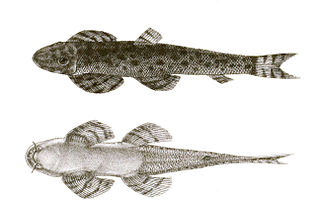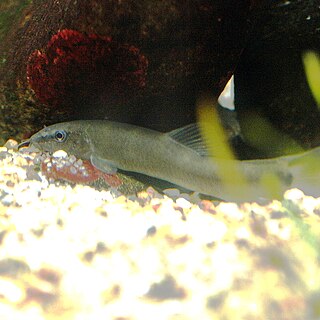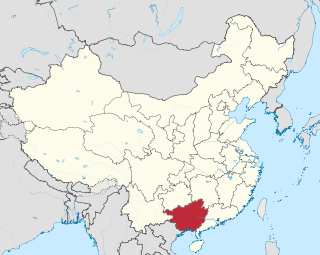Sinocyclocheilus is a genus of freshwater fish in the family Cyprinidae endemic to China, where only found in Guangxi, Guizhou and Yunnan. Almost all of its species live in or around caves and most of these have adaptions typical of cavefish such as a lack of scales, lack of pigmentation and reduced eyes. Several species have an unusual hunchbacked appearance and some of the cave-dwellers have a "horn" on the back, the function of which is unclear. In contrast, the Sinocyclocheilus species that live aboveground, as well as a few found underground, show no clear cavefish adaptions. They are relatively small fish reaching up to 23 cm (9.1 in) in length. The individual species have small ranges and populations, leading to the status of most of the evaluated species as threatened. Many species populations in the genus have yet to be evaluated by the IUCN.

Cobitis is a genus of small freshwater fish in the family Cobitidae from temperate and subtropical Eurasia. It contains the "typical spiny loaches", including the well-known spined loach of Europe. Similar spiny loaches, occurring generally south of the range of Cobitis, are nowadays separated in Sabanejewia.

Oreonectes is a genus of fish in the family Nemacheilidae found in the rivers and cave of Asia. Many of these species are troglobitic.

Schistura is a genus of fish in the stone loach family Nemacheilidae native to the streams and rivers of the southern and eastern Asia. Some of these species are troglobitic.
Sinogastromyzon is a genus of hillstream loaches native to eastern Asia.

Triplophysa is a genus of fish in the family Nemacheilidae found mainly in and around the Qinghai-Tibet Plateau in China. Currently, the genus is a mixed assemblage of species. Some lineages have been identified and treated as subgenera, but as Wikipedia follows Fishbase for fish species these have been treated as subgenera in Wikipedia, although Kottelat and the Catalog of Fishes treat them as genera. FishBase, however, includes these in Triplophysa without specifying subgenera and treats the names given by Kottelat as synonyms.

Yunnanilus is a genus of small stone loaches that are endemic to southeastern China, especially Guangxi and Yunnan. They are found in rivers, streams and lakes; some species are restricted to caves.
Xiurenbagrus is a genus of torrent catfishes of the family Amblycipitidae. It includes three species.

Balitora is a genus of fish in the family Balitoridae endemic to Asia.
Erromyzon is a genus of fish in the family Gastromyzontidae endemic to China and Vietnam.
Heminoemacheilus is a small genus of stone loaches endemic to Guangxi in China and only living in caves.
Homatula is a genus of stone loaches endemic to China.
Metahomaloptera is a small genus of hillstream loaches endemic to China.
Paranemachilus is a genus of stone loaches endemic to China.

Parabotia is a genus of loaches. Most species in the genus are endemic to China, but P. curtis is from Japan, P. dubius is from Vietnam, and P. mantschuricus is from the Amur River basin.
The Nemacheilidae, or stone loaches, are a family of cypriniform fishes that inhabit stream environments, mostly in Eurasia, with one genus, Afronemacheilus found in Africa. The family includes about 630 species.
Yaoshania pachychilus, the panda loach, is a species of gastromyzontid loach endemic to mountain streams in Jinxiu County, Guangxi in China. This species grows to a length of 5.8 centimetres (2.3 in) SL. This species is monotypic, but it was formerly included in Protomyzon. Juveniles are strikingly coloured in black-and-white, but adults are relatively plain.

The Gastromyzontidae are a family of loaches native to China and Southeast Asia, where typically found in streams and rivers with a fast current. The family includes about 137 species in eighteen genera. This family was resurrected by M. Kottelat in his review and revision of the loaches in 2012.
Troglonectes is a genus of troglobitic fish in the family Nemacheilidae, native to caves of Asia. Fishbase and other authorities place these species in the genus Oreonectes.










